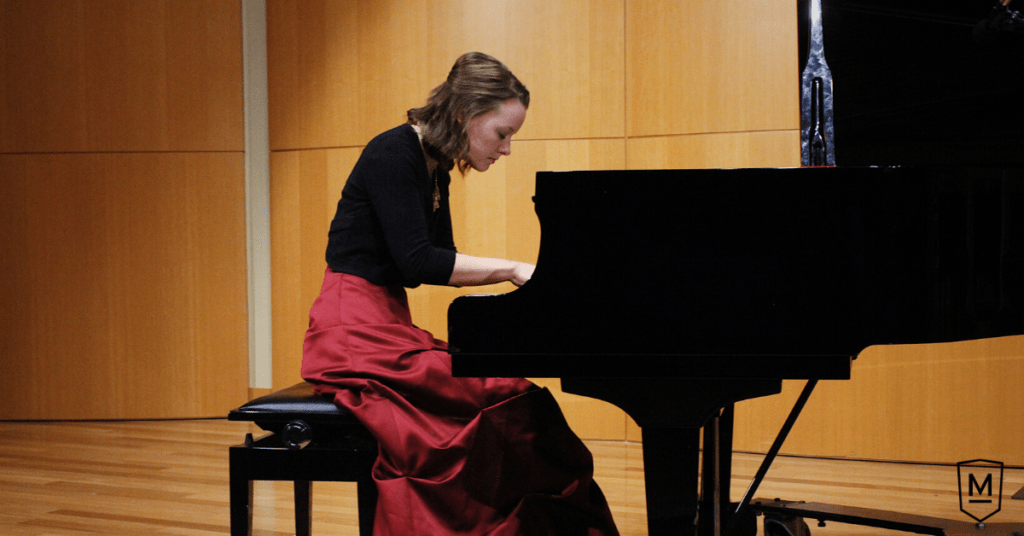Grace Betry Senior Piano Recital Highlights
Under the direction of June Brus, Grace Betry artistically performed her senior recital. Betry prepared this showcase of talent and hard work for months, and her performance vividly demonstrated her passion for music. After completing her music degree in performance and pedagogy with a TESOL minor, she plans to marry Tyler Juvinall, teach English, and possibly pursue a graduate degree in music.
Beethoven: Sonata No. 17 in D minor
First, Beethoven‘s Sonata No. 17, perhaps Betry’s greatest performance of the night, has an interesting history. She explains, “Beethoven wrote some theatrical elements into this piece with different voices answering back and forth. He also has a short ‘recitative’ section where the performer plays just a melody like an actor giving a soliloquy. Also, many people imagine this piece as a storm. The calm and contrasting explosive sections give suspense and make the audience feel as though a storm is occurring around them. When Beethoven was asked what he was envisioning while composing, he said Shakespeare’s Tempest. The sonata has since earned the nickname, ‘The Tempest.'”
Bach: Gottes Zeit ist die allerbeste Zeit, BWV 106
Next, “Gottes Zeit ist die allerbeste Zeit,” or “God’s Time is the Best Time,” is not typical of keyboard music in the Baroque era. Originally written for mixed chorus and two flutes to play at a funeral, James Frisken transcribed the piece for piano solo. Ultimately, the work conveys the peace that Bach felt while meditating on God’s sovereignty.
God’s time is the best of all times. In Him we live, move and are, as long as He wills. In Him we die at the appointed time, when He wills.
Brahms: Sonata for Two Pianos in F Minor – Scherzo
Johannes Brahms’ “Sonata for Two Pianos” exemplifies musical genius and creativity. “Brahms was known for his ability to write two or more independent melodies into a single piece,” Betry says. “This technique, called counterpoint, occurs throughout the piece, as Brahms weaves melodies between the two pianos. Although the piece was originally written as a string quintet, the piano duo works well to adequately picture the different instruments playing the melodies originally.”
Gottschalk: La Gallina
Finally, “La Gallina” brings to light the fun side of music. “Gottschalk was a pianist who found his roots in Creole culture, giving his music a distinct sound. ‘La Gallina’ translates to ‘the hen,’ and throughout the piece, Gottschalk uses melodies that sound like a hen pecking the ground and clucking. His music connects with many people because of the realism of the music. Also, because of the music’s comedic elements, many chuckle,” Betry adds, “and I trust you will as well.”


